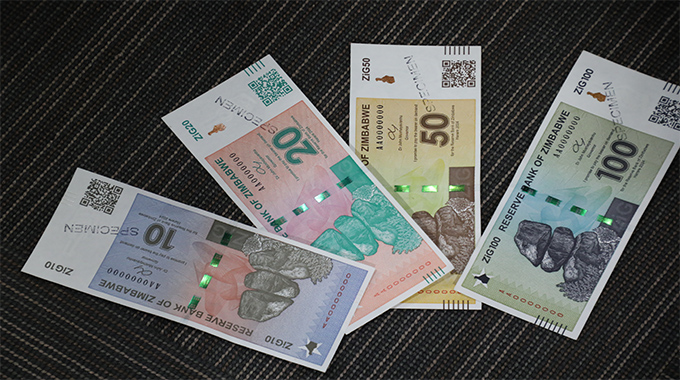The role of IP for SMEs in the crafts and visual arts
Aleck Ncube
THIS week I focus on the role of Intellectual Property in the crafts and visual arts sector. Hopefully SMEs involved in this kind of business will benefit from this article.
Craft products encompass a vast variety of goods made of diverse materials. They are produced by artisans, either completely by hand or with the help of hand-tools and even mechanical means, as long as the direct manual contribution of the artisan remains the most substantial component of the finished product.
Their special nature derives from their distinctive features, which can be utilitarian, aesthetic, artistic, creative, culturally attached, decorative, functional, traditional, and religiously and socially symbolic and significant.
Artisanal products can be classified under broad divisions. These divisions are primarily based on the materials used, or a combination of the materials and the technique.
The six main categories of artisanal products are basketry, leather, metal, pottery, textiles and wood. Artisans may be defined as people who make products manually.
In visual arts, the individual (the artist) uses various elements or material to express his or her feelings, emotions and differing perceptions of the world that surrounds him or her. The result of this work is judged mainly by the sense of sight.
Painting, drawing, sculpture in various materials, printmaking, photography, plans, maps, performance art, installation art, mail art, assemblage art, body art, textile arts, fashion design, multimedia, video art, web design, web art, digital art, graphic and product design are some expressions of visual arts.
From an Intellectual Property perspective as well as from a marketing and consumer perspective, crafts and visual arts overlap in that they both produce essentially hand-made products, often culturally rooted, whose distinctive quality or inherent character has primarily an aesthetic appeal which is judged largely by the eye, although elements of touch and smell may also be important.
Craft items may also have functional or useful features, whereas the products of visual arts do not.
Why is Intellectual Property crucial in crafts and visual arts marketing?
All artisans and visual artists create Intellectual Property assets. Their works may be protected by Copyright. Many of them possess confidential information of commercial value, known as Trade Secrets.
Some of them have a Trademark. Most develop creative new or original designs. Some may even invent or improve a product or process used in their creative endeavour, which can be protected by a Patent or a Utility Model.
There are, therefore, many practical reasons for artisans and visual artists to understand and use various types of Intellectual Property. Craftspeople and visual artists may work alone or in a group.
They may be employed, or may employ others, and they may use or improve upon Intellectual Property assets of others.
Whether ownership of Intellectual Property assets is individual or joint, it needs to be established unambiguously. This is a prerequisite before an artisan or visual artist, as the owner of Intellectual Property assets, can exercise the rights that are associated with owning those assets (for example, to buy or sell assets, or to take action against theft or unauthorised copying or imitation of the business’s image, Trademarks, original designs, inventions, confidential business information or other Intellectual Property assets).
On the other hand, an artisan or artist who wants to use Intellectual Property assets owned by someone else needs specific authorisation to do so. Artisans or visual artists who own Trademarks, Designs, Patents, Trade Secrets, and so on have exclusivity over such Intellectual Property assets. This means that they have the right to exclude all others from using those Intellectual Property assets. Anyone else who wants to use the Intellectual Property assets needs to have the permission of the owner.
There are many types of rights associated with ownership of different types of Intellectual Property assets. The owner has the option of permitting the use of Intellectual Property assets, on payment, by allowing one or more types of rights to be used for different purposes by many people, or of limiting the number of users in a specified geographical area.
The artisans’ and visual artists’ communities, as well as a country’s economy, may benefit from the Intellectual Property system. Effective protection and use of Intellectual Property assets owned by artisans and visual artists would not only enrich the cultural heritage of a country but also increase the contribution of the craft and visual arts sectors to their individual wealth as well as their country’s GDP.
With the continuing liberalisation and deregulation of the world trading system freeing the flow of goods and services, the international business environment is becoming increasingly competitive for creators and providers of all kinds of craft and visual arts products.
Consumers now have tremendous choice. Artisans, craft entrepreneurs, visual artists and all the intermediaries in the supply chain must constantly strive to improve the quality of their products and services, the production processes, their brand identity and the effectiveness of their marketing strategies, if they wish to improve their business performance, productivity and competitiveness and win the hearts and minds of customers.
For the craft and visual arts sectors, the marketing challenges come from many directions. The major challenge comes from the fact that the products of craftspeople and visual artists are not generally basic needs for consumers. As a result, consumption of these products declines when consumer spending is down, especially during economic downturns.
A key strength of artisans and visual artists lies in their creativity and craftsmanship in expressing it. This gives their output a distinct traditional, cultural or symbolic flavor, which arouses the interest and matches the emotional needs and aesthetic tastes of discerning customers in specialised niches of domestic and export markets.
Given today’s instant information and communication facilities, coupled with the ease and speed of copying and imitation, the market can simply get flooded with look-alike products or downright copies, which are also known as “counterfeits” or “forgeries”.
The challenge for artisans and visual artists is not just to produce and market new products that cater to changing consumer tastes, but also to prevent – or if unable to prevent then to effectively deal with — unfair competition or theft of their creative ideas.
The Intellectual Property system is the best available tool for creating and maintaining exclusivity over creative and innovative output in the marketplace. The effective use of Intellectual Property can also help artisans and visual artists to develop networks and relationships not only with end consumers, but also with all the links in the supply and demand networks.
Each country has to protect culture-based goods as a substantial part of its national cultural heritage. This is relevant for Zimbabwe, where the role of the craft and visual arts sectors can prove to be pivotal for sustainable development and poverty reduction.
Defending the interests of artisans, craft entrepreneurs and visual artists against unfair competition is critical in order to underpin their commercial success and their contribution to individual and collective wealth creation, as well as to preserve cultural identity and diversity.







Comments